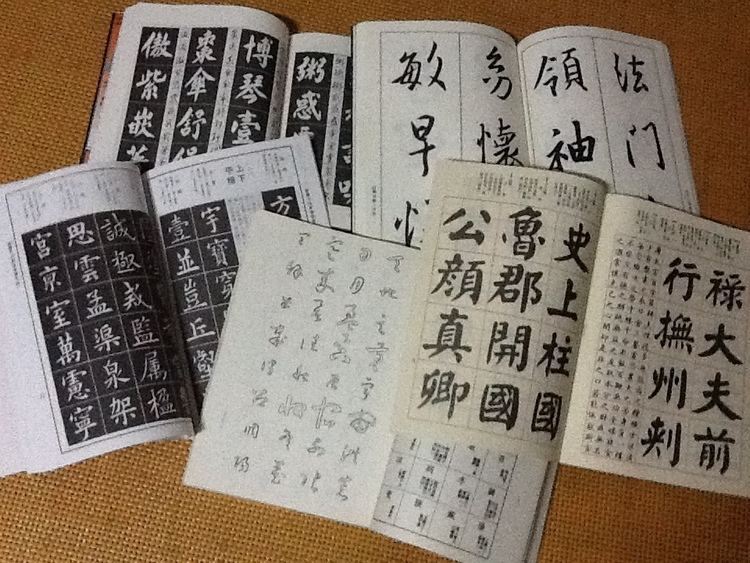 | ||
A copybook (Chinese: 字帖; pinyin: zi tie or Chinese: 習字帖; pinyin: xizi tie) is a book for practicing Chinese calligraphy.
Contents
The origin of copybook
In ancient times, famous calligraphy was carved in stone. Later, people made rubbings of the stone on paper so that they could copy and learn the famous calligraphy.
The emperor of Liang Dynasty, Xiao Yan, made a rubbing of one thousand characters from the famous calligrapher Wang Xizhi, and made sentences and paragraphs for the one thousand characters, which became known as the Thousand Character Classic. Later the Thousand Character Classic became a systematic copybook.
Classification
Copybooks can be divided according to the style of calligraphy and the kind of pen used.
The styles of calligraphy that are used in copybook include regular script (楷书), cursive script(草书), running script(行书), clerical script(隶书), and seal script(篆书).
Most calligraphy is for brushes, but there is also hard calligraphy, using ballpoint pens, pencils, or fountain pens.
Modern role
Today children in China who enter school would have a copybook for learning characters. Because they just learn writing for a short time, it is hard for children to write characters in their own style. Copybooks can help children practice different font of handwriting and build their own style. If people want to learn calligraphy, besides the Four Treasures of the Study, they also need to prepare copybooks which the type of font is what they want to learn. Because the choice of copybooks would decide the style people write in. There are also copybooks that are online online with the option to enter your own characters and create your own copybook.
Steps
Other
Since Yin Dynasty, it became popular to engrave words on stone to make them spread further and longer, but not calligraphy. Since Tang Dynasty, people began to save the beauty of calligraphy on the stone. So rubbing calligraphy was popular in that time.
Before the development of new technology, calligraphy can only be learned by using stone rubbings. However, there had to be some mistakes. The new technology, Jingying Technology, actually helps learners a lot because the rubbing is much more like the original calligraphy.
